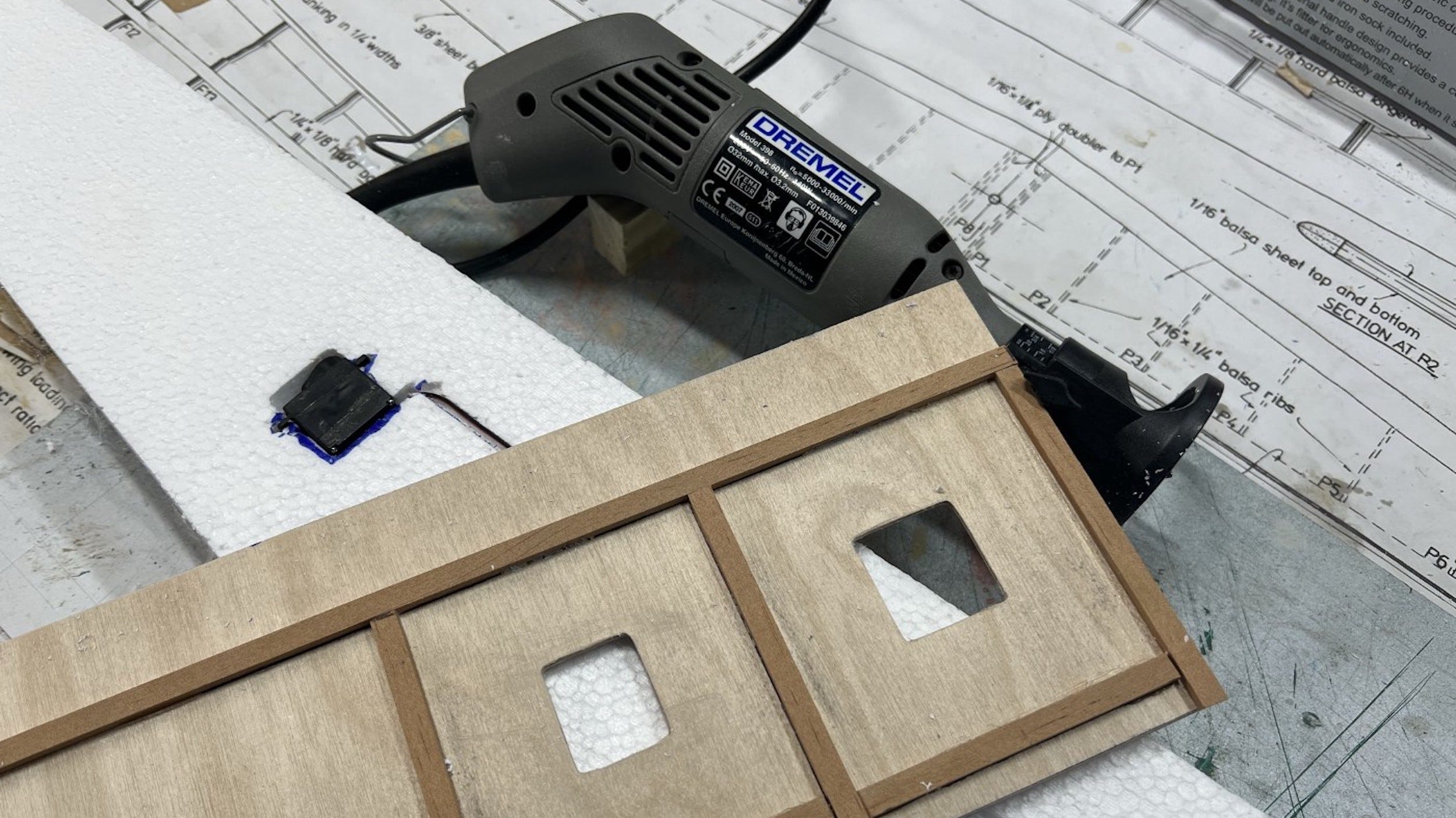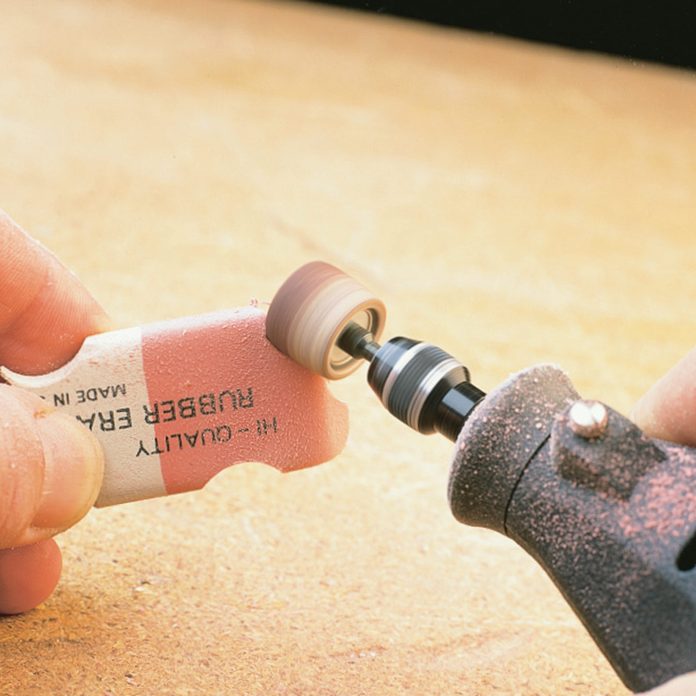Cutting wood might seem like a job for big saws and heavy tools, but what if you could do it with something small, precise, and easy to handle? If you want to learn how to cut wood with a rotary tool, you’re in the right place.
This method lets you make clean cuts, detailed shapes, and smooth edges without the hassle of bulky equipment. Whether you’re working on a craft project or need quick fixes around the house, mastering this technique can save you time and effort.
Keep reading, and you’ll discover simple steps and expert tips to make your wood cutting easier and more accurate than ever before.
Choosing The Right Rotary Tool
Cutting wood with a rotary tool needs the right equipment. Picking the correct rotary tool makes the task easier and safer.
This guide helps you understand different rotary tools and cutting attachments for woodwork.
Types Of Rotary Tools
Rotary tools come in various types. Each type suits different wood cutting jobs. Here are common types:
- Corded Rotary Tools:These plug into power outlets and offer steady power for long jobs.
- Cordless Rotary Tools:Battery-powered for easy movement without cords.
- Variable Speed Rotary Tools:Speed control lets you adjust power for different wood thicknesses.
- Heavy-Duty Rotary Tools:Built for tough cutting and long use on hard wood.
Selecting The Proper Cutting Attachment
Choosing the right cutting attachment is as important as the tool itself. Different attachments fit various cutting needs.
| Attachment Type | Best Use | Material Compatibility |
| Cut-off Wheels | Straight cuts on thin wood | Wood, plastic, metal |
| High-Speed Cutters | Detail work and shaping | Soft and hardwood |
| Sanding Drums | Smoothing edges after cuts | Wood and painted surfaces |
| Carbide Burrs | Removing material and carving | Hardwood and dense wood |

Credit: www.youtube.com
Preparing Your Workspace
Cutting wood with a rotary tool needs a safe and tidy workspace. This helps you work faster and avoid accidents.
Before starting, prepare your area well. Use the right gear and set up your work surface carefully.
Safety Gear Essentials
Wear safety gear to protect yourself from dust, noise, and flying wood pieces. Use the right gear every time you work.
- Safety glasses to protect your eyes
- Hearing protection like earplugs or earmuffs
- A dust mask to avoid breathing wood dust
- Gloves to protect your hands
- Wear long sleeves and pants to cover your skin
Setting Up A Stable Work Surface
Use a flat and steady surface to hold your wood piece. A shaky table can cause mistakes and injuries.
| Tip | Why It Matters |
| Use clamps | Keeps wood from moving while cutting |
| Clear the area | Prevents tripping and tool damage |
| Good lighting | Helps you see cuts clearly |
| Keep tools handy | Speeds up your work |
Marking And Measuring The Wood
Cutting wood with a rotary tool needs careful marking and measuring. This helps you make clean and accurate cuts.
Using the right tools and methods for marking and measuring saves time and material. It also improves your results.
Accurate Measurement Techniques
Measure twice to avoid mistakes. Use a ruler or tape measure with clear markings. Always hold it straight and tight against the wood.
- Place the wood on a flat surface for stability.
- Use a pencil with a sharp tip for clear marks.
- Double-check measurements before marking.
- Mark the start and end points clearly.
- Use a square tool to check right angles.
Creating Clear Cut Lines
Clear lines guide your rotary tool for smooth cuts. Use tools that make the lines easy to see.
| Tool | Purpose | Tip |
| Pencil | Mark cut lines | Use a sharp pencil for fine lines |
| Marking Knife | Score wood surface | Creates a precise groove for the tool |
| Combination Square | Draw straight, right-angle lines | Keep firmly pressed against wood edge |
| Chalk Line | Mark long straight lines | Snap sharply for visible lines |

Credit: medium.com
Cutting Techniques For Wood
Using a rotary tool to cut wood requires care and skill. This guide helps you learn safe and accurate cutting methods.
Follow these tips to improve your cuts and protect your workpiece and yourself.
Starting The Cut
Begin by marking your cut line clearly on the wood. Use a pencil or tape to guide the tool.
Hold the rotary tool steady and start at a low speed. Let the bit gently touch the wood before increasing speed.
- Secure the wood firmly to prevent movement
- Use the right cutting bit for wood
- Start with shallow cuts to avoid splintering
Maintaining Control And Precision
Keep a firm grip on the rotary tool to control its movement. Avoid pushing too hard; let the tool do the work.
Move slowly along the marked line. Use smooth, steady motions to keep the cut clean and accurate.
- Hold the tool with both hands if possible
- Keep your wrist steady and relaxed
- Check your progress often to stay on track
Avoiding Common Mistakes
Avoid forcing the tool, which can cause rough cuts or damage the wood. Do not rush the process.
Wear safety glasses and a dust mask. Wood dust can irritate your eyes and lungs.
- Do not use a dull or damaged bit
- Keep your workspace clean and well-lit
- Do not cut wood that is too thick for your tool
Finishing Touches
After cutting wood with a rotary tool, the final steps make your work look clean. Finishing touches improve both safety and appearance.
Focus on smoothing rough edges and cleaning your work area. These small tasks help protect your project and your workspace.
Sanding Edges Smooth
Sanding removes splinters and rough spots from the cut edges. Use fine-grit sandpaper for the best results.
- Wrap sandpaper around a small block for better control.
- Move the sandpaper in light, even strokes along the edges.
- Check edges often to avoid removing too much wood.
- Use a sanding attachment on the rotary tool for tight curves.
- Wear a mask to avoid breathing in dust.
Cleaning Up The Work Area
Cleaning your work area stops dust and wood chips from causing problems. It also keeps your tools ready for next use.
| Cleaning Task | Tools Needed | Tip |
|---|---|---|
| Sweep the floor | Broom and dustpan | Sweep after every session |
| Wipe surfaces | Cloth and mild cleaner | Use a damp cloth to catch dust |
| Empty dust collector | Vacuum or dust extractor | Do this before storage |
| Organize tools | Toolbox or rack | Store tools dry and tidy |
Tips For Best Results
Using a rotary tool to cut wood can be easy. With the right tips, you can get smooth and precise cuts.
Understanding your tool and setting it up correctly is important. This will help you achieve the best results when cutting wood.
Tool Maintenance
Keeping your rotary tool in good condition is crucial. Regular maintenance extends its life and ensures safety.
Clean your tool after each use. Check for any loose parts or wear and tear.
- Lubricate moving parts to reduce friction
- Replace worn-out bits to maintain cutting efficiency
- Store the tool in a dry place to avoid rust
Choosing The Right Speed Settings
Speed settings affect how your rotary tool cuts through wood. Different woods require different speeds for best results.
Start with a low speed for soft woods. Increase speed gradually for harder woods.
- Low speeds for soft woods like pine
- Medium speeds for woods like oak
- High speeds for hard woods like mahogany

Credit: www.familyhandyman.com
Frequently Asked Questions
What Type Of Rotary Tool Is Best For Cutting Wood?
A rotary tool with a high-speed motor and adjustable speed settings works best. Use a cutting wheel designed for wood. This ensures clean cuts and prevents burning or splintering.
How Do I Prepare Wood For Cutting With A Rotary Tool?
Secure the wood firmly using clamps or a vise. Mark the cutting line clearly with a pencil. Wear safety gear like goggles and gloves before starting.
Can I Cut Thick Wood With A Rotary Tool?
Cutting thick wood is possible but takes more time. Use multiple shallow passes instead of one deep cut. This prevents tool damage and keeps the cut smooth.
What Safety Precautions Should I Follow When Cutting Wood?
Always wear eye protection and a dust mask. Keep fingers away from the cutting area. Work in a well-ventilated space to avoid inhaling dust.
Conclusion
Cutting wood with a rotary tool is simple and effective. Use the right blade for clean cuts. Always wear safety gear to protect yourself. Take your time and follow the wood grain. Practice on scrap wood to improve your skills.
This tool fits small and detailed jobs well. With care, your wood projects will look great. Try it out and see the results yourself. Keep your tool clean for better performance. Enjoy working on your wood crafts easily and safely.


